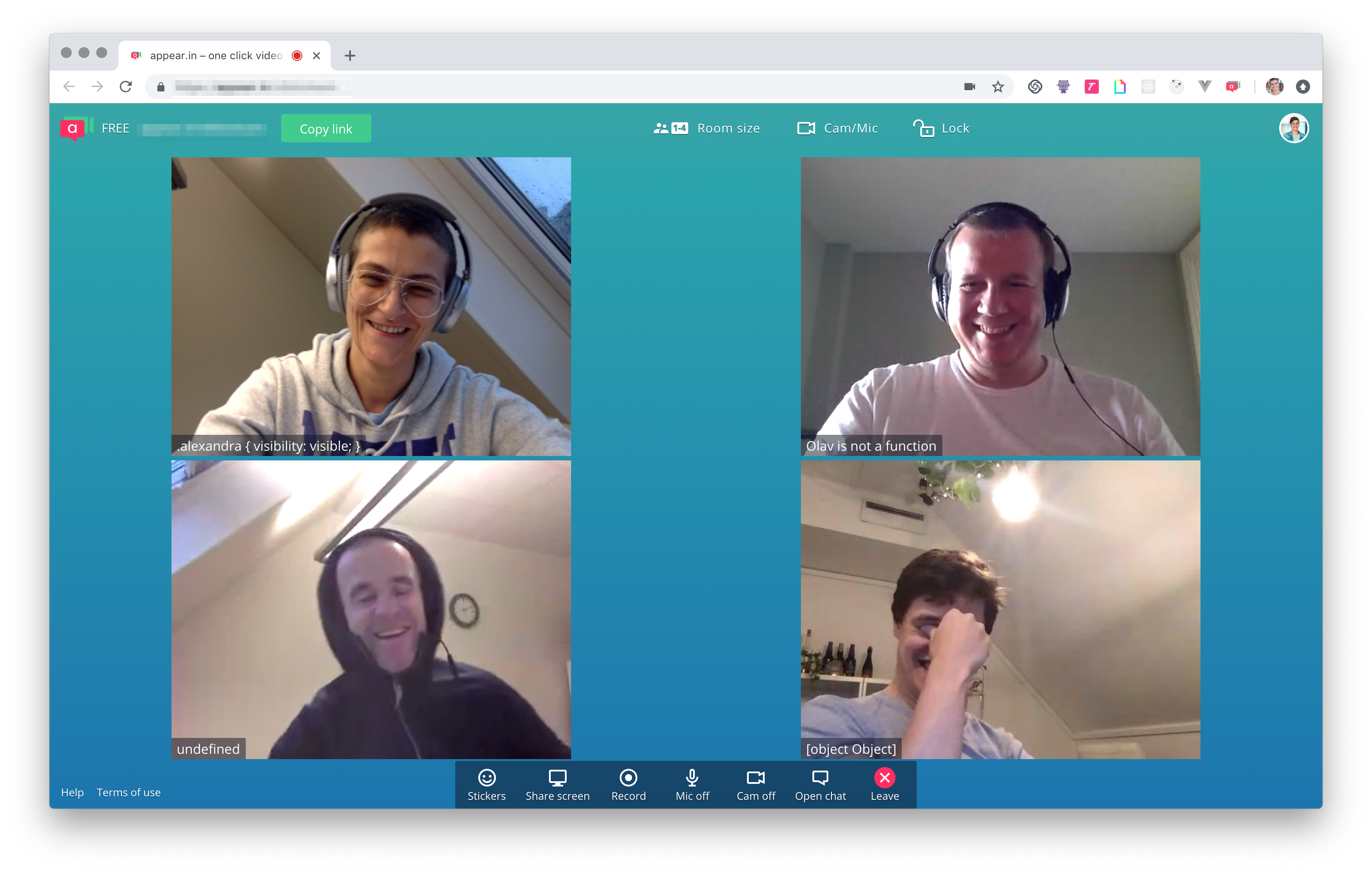To my own amazement, I have single-handedly managed to hire an entire engineering team of three. 💪

The VIBBIO product team being silly during our Friday afternoon video call (from top left to bottom right: me, Olav, Espen, and Jon)
We are the first, and so far only, remote team in the company.
This new setup comes with a couple of challenges for us at VIBBIO.
- Communication now has to happen more intentionally, and at least partly in structured writing.
- We have to put a greater effort into building relationships we do not share the physical space of an office with.
- We need to pay attention to the remotees not feeling left out or reduced to execution islands, with no say in strategic and long-term discussions.
- Airtime has to be distributed equally, and credit for achievements has to reach the right person
Not all of these challenges are unique to remote teams – especially point 3 and 4 also apply to extrovert-introvert dynamics – but they are more pronounced when a number of coworkers are simply not physically present in the office every day.
To get us started at least somewhat on the right foot, I have put in place an initial communication structure based on what I learned from doing open source, from discussions with friends working in remote teams (big shoutout to Ola! 💖), and from the books Radical Focus by Christina Wodtke, Radical Candor by Kim Scott and Remote by Jason Fried and David Heinemeyer-Hansson.
Weekly team-meetings
We started out with two weekly meetings via video-call. Both are documented in a shared Google Doc so everyone can go back and look at what was said. They follow an agenda which we’re adjusting whenever we feel the need.
We work a lot on our relationships in these meetings, and I intentionally avoid them being too rigidly focused. There is room for chit-chat, diversions, and personal sharing.
On Monday morning, we’re all business, making sure everyone on the product team knows what everyone else is planning to do and has the necessary context to make decisions autonomously. Everyone should be able to set their own work schedule – the beauty of working remotely – without becoming a bottleneck for anyone else.
We used to meet on Friday afternoon to take stock and celebrate what went well during the week, and to inspect what didn’t go as planned to see if there is anything we can improve upon. As startup life is inherently challenging and messy, these meetings were really meant to focus on the positive. We want to end the week on a high-note rather than dragging frustrations into the weekend.
Since we’ve introduced a Friday meeting for the entire VIBBIO team that serves a similar purpose, we’ve decided to put our own version on ice for the time being.
Appreciations
Most product teams I have been a part of have the tendency to focus on the areas that need improvement, and are very quick at pointing out what could have been done in a better way.
We’re trying to make a habit out of cheering for each other. As we hold each other to very high standards, it’s easy to feel like we’re falling short of expectations. So it’s even more important to take a moment to appreciate the things we did well.
We celebrate each other publicly, either in our team meetings or in a Slack channel we share with all VIBBIO’ans.
Interacting with the rest of the company
In a way, we were lucky that I could onboard the entire team at the same time. We flew Jon and Olav to Oslo for a week to meet everyone and so we could all get to know each other. Face-time is important, and we all come together in Oslo regularly.
All our company meetings have included varying numbers of VIBBIO’ans calling in via video. Including people in different locations has opened the door for Oslo based co-workers to work from outside the office as well. Everyone wins.
That being said, it took conscious effort, and some serious persistence, to move communication from the usual ad-hoc walking over to someone’s desk to a written form which includes the entire team.